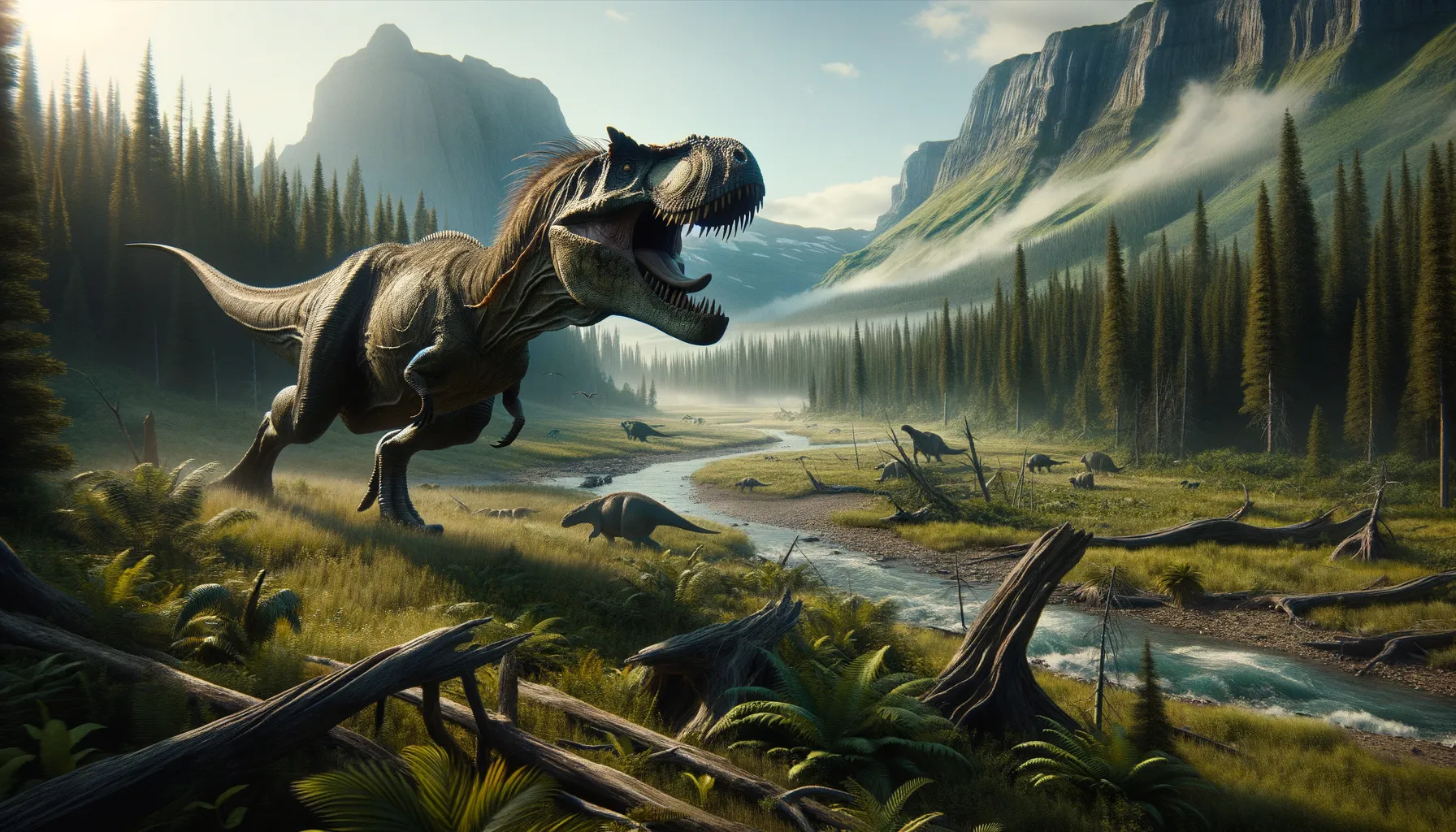
Stygivenator
Roaring through the ancient world.
Period
Cretaceous
Length
Roughly 10 meters in length.
Height
About 2 meters tall at the hips.
Weight
Approximately 1 metric ton.
Stygivenator was a remarkable theropod dinosaur known for its fascinating predatory skills during the Cretaceous period. It roamed the prehistoric landscapes of North America, adapting to various environmental challenges. Its fossils provide insights into its behavior, diet, and interactions with other species, showcasing Pangaea’s vibrant ecosystems. Recent studies suggest intricate growth and reproduction patterns, enhancing our understanding of these incredible reptiles.
Diet
Stygivenator was a carnivore, relying mainly on meat for its diet. It likely hunted smaller herbivorous dinosaurs and scavenged when opportunities arose.
Hunting
It employed ambush tactics, using its environment to camouflage before attacking prey. Its keen senses helped it track movements and locate sources of food efficiently.
Environmental challenges
During the Cretaceous, Stygivenator faced fluctuating climates, which affected its food availability. Natural disasters like volcanic activity posed significant threats too. Navigating these changes required adaptability within its habitat to sustain its population.
Speed
Moderate, suited for short bursts.
Lifespan
Estimated around 20 to 30 years.
First discovery
First discovered in the 1990s in North America.
Fun Facts
- Stygivenator was named after the mythical river Styx, which in Greek mythology is associated with the underworld.
- It was a theropod dinosaur, meaning it was a bipedal carnivore.
- Fossils of Stygivenator have mostly been found in North America, including parts of what is now Montana.
- Scientists believe Stygivenator lived during the late Cretaceous period, around 70 million years ago.
- Stygivenator is thought to have been a fierce predator with sharp, serrated teeth for tearing into prey.
- Despite its fearsome appearance, Stygivenator was relatively small compared to some of its dinosaur relatives, growing up to about 20 feet in length.
- The name 'Stygivenator' translates to 'Styx hunter,' highlighting its predatory nature.
Growth and Development
Stygivenator underwent rapid growth early in life, ensuring survival against predators. Juveniles stayed with parents for protection, learning vital skills. Continued growth brought changes in physical capabilities, enhancing their hunting prowess.
Habitat
It inhabited dense forests and open plains, taking advantage of varied landscapes for hunting and retreating. It needed access to water sources for hydration. These habitats provided ample opportunities to exploit prey and avoid larger predators.
Interaction with other species
Stygivenator had complex relationships within its ecosystem. It competed with other predators, occasionally leading to confrontations. It also interacted with herbivores, forming critical predator-prey dynamics, impacting population control.
Natural lifespan
Most likely lived naturally up to 30 years.
Reproduction
Breeding likely occurred seasonally, based on climate. The females laid eggs in carefully selected nesting sites. Parental care was probable during early stages, ensuring offspring development in competitive environments.
Social behaviour
Solitary most of the time, except during breeding. Possible pack-like behavior observed during hunts for larger prey. Communicated using vocalizations to express territory claims or threat warnings.
Fossil locations
Fossils primarily discovered in western regions of North America, notably in areas like Utah. These sites have contributed crucial information about its existence. Fossil evidence often found alongside herbivorous dinosaurs, painting a detailed picture of its diet.
